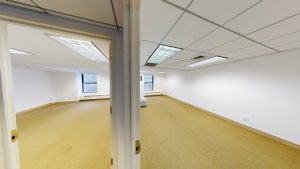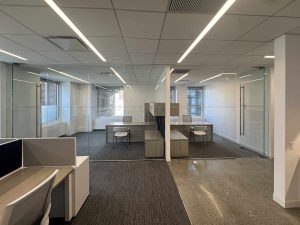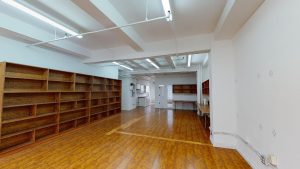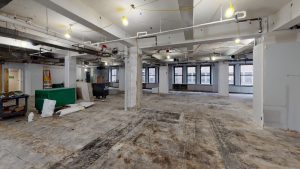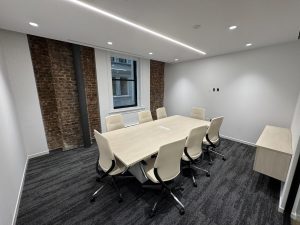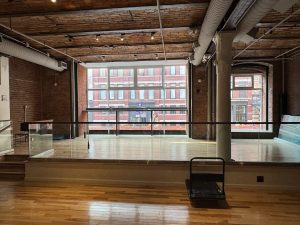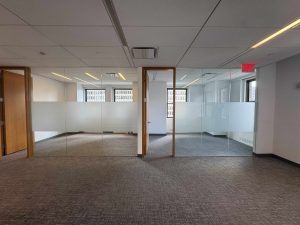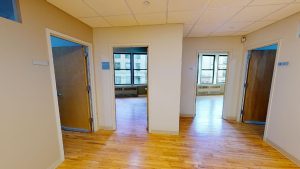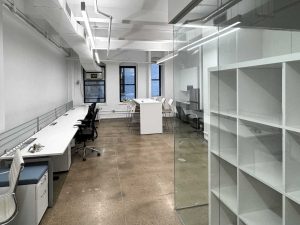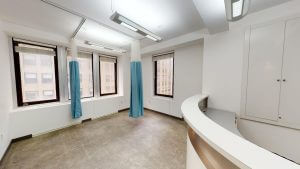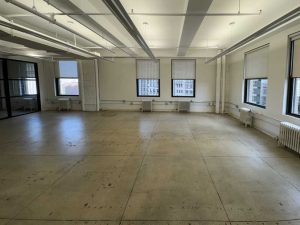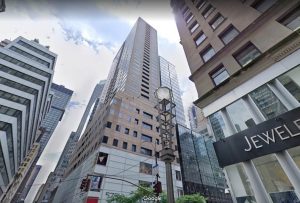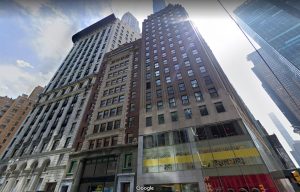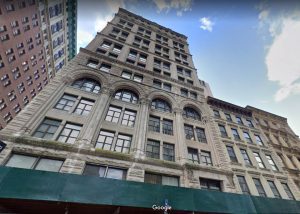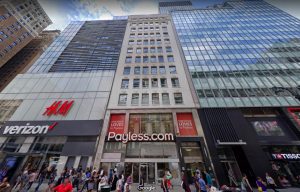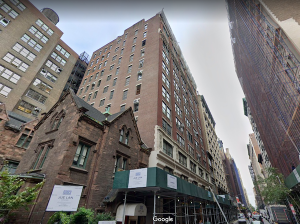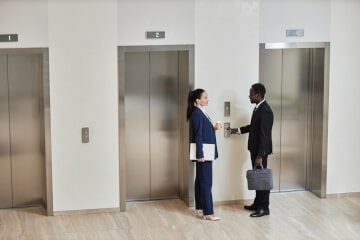New York City commercial real estate marches to the beat of a different drum when defining rentable vs. usable square feet. Here, landlords have crafted a distinct system steeped in intelligent asset management to maximize their return on investment.
Imagine a landlord buying a building akin to a cube, measuring 100 x 100 x 100. They purchase 100,000 square feet but only 66,000 square feet of usable rental space. The solution? They adopt a ‘loss factor,’ increasing the measure of each space so the tenant’s proportionate share of common areas gets added into the measurement for their space.
In many other regions, this would translate into additional Common Area Maintenance (CAM) charges on top of the base rent. Not so in NYC. Here, we have the loss factor instead. It’s just a different way of doing things.
As we explore deeper, you’ll learn how this NYC approach influences commercial leasing.
Breaking Down the Rentable vs. Usable Square Feet Concept
Let’s break down how landlords often rent a property’s ‘true’ area, then allocate the space judiciously.
How it Works
Imagine a building covering an area of 100,000 square feet with various interior spaces like corridors, restrooms, elevator shafts, lobby, and basement. However, tenants cannot directly lease some of these spaces. They are ‘common areas‘ and are open to all tenants. After calculations, the landlord’s architect determined that these common areas would occupy 30,000 square feet. In comparison, tenants can lease the remaining 70,000 square feet.
Introducing the Loss Factor
Here’s where it gets interesting. As the intro discusses, the landlord employs the ‘loss factor,’ a ratio reflecting the difference between the total building area and the leasable space.
In our example, the 100,000 square feet building has 30,000 square feet of common areas. This results in a ‘loss factor‘ of 30%. From the landlord’s perspective, they’re offering 100,000 ‘rentable’ square feet. On the other hand, from the tenant’s view, they’re receiving 70,000 ‘usable’ square feet.
Essentially, the tenant covers the cost for the whole building’s footprint (rentable square feet) but gets exclusive usage of a part of it (usable square feet). However, the tenant also enjoys the benefit of these common areas, including lobbies, elevators, and bathrooms, without additional charges like those found outside NYC.
Other Loss Factor Considerations
In NYC, loss factors are not standardized; they can differ from one building to another. Thus, when you’re looking for a space, your broker might show you a few options that are all the same size (say 2,000 SF). However, you’ll find that each option offers a different amount of usable square footage.
A broker with solid expertise and experience in commercial real estate will be familiar with buildings that usually have lower loss factors. Their knowledge can be invaluable in finding a space that offers more usable square feet for your business.
The Key Takeaway
We’ve explored the differences between rentable vs. usable square feet in Manhattan’s unique commercial real estate market. It’s a concept that can initially raise eyebrows; admittedly, it takes a bit of getting used to it. However, this information will hopefully help you as a tenant determine the amount of square footage you need and plan your budget.
With this knowledge, you’re one step closer to positioning yourself for an office space that will meet your architectural requirements and comfortably accommodate your staff for many years while allowing a buffer for growth.


